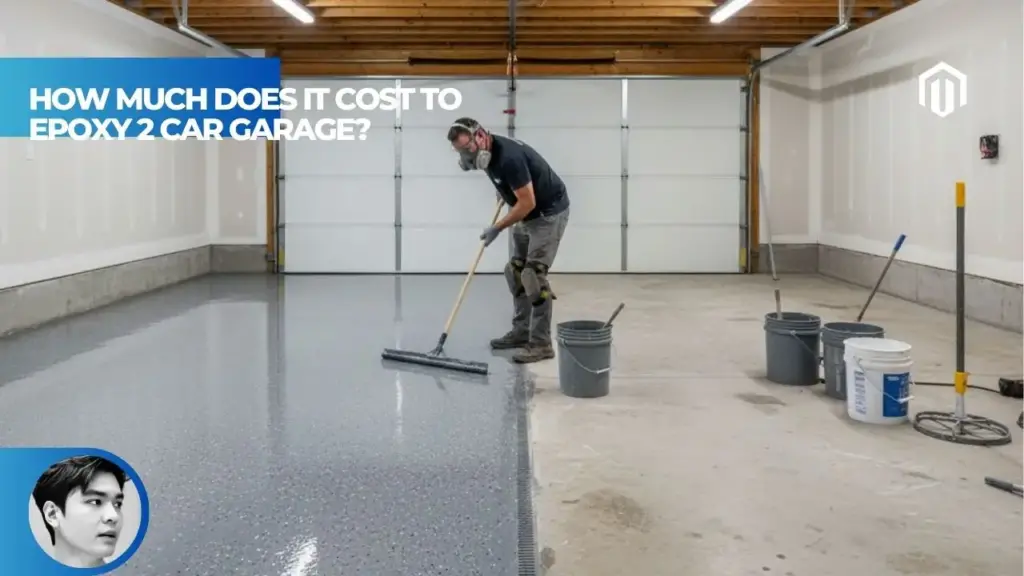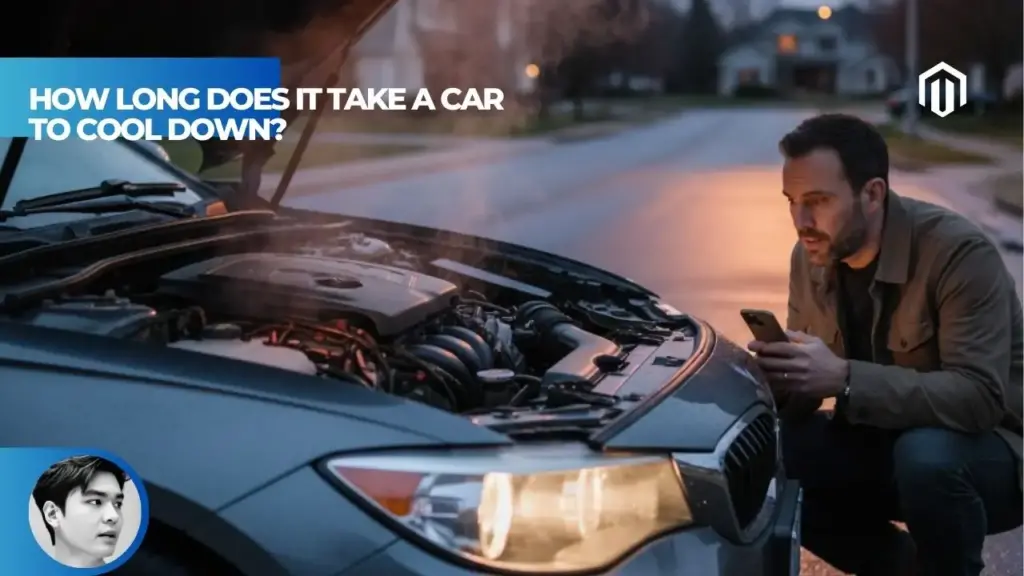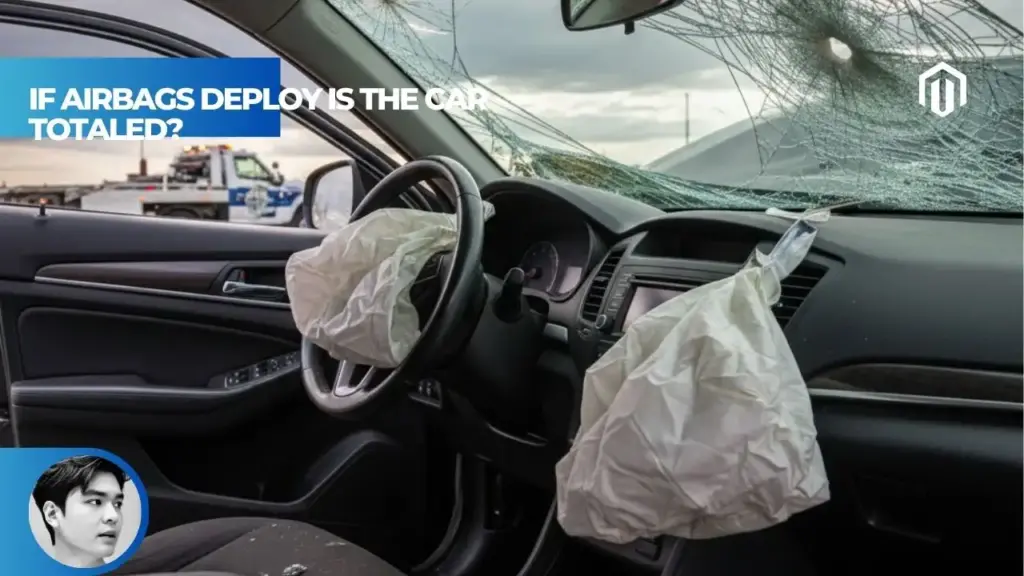An active restraint system in a car is a safety device that requires occupant action to engage, primarily conventional seatbelts that must be manually buckled. Unlike passive restraints such as airbags that deploy automatically during a crash, active restraints only provide protection when users consciously activate them by buckling up or adjusting their position.
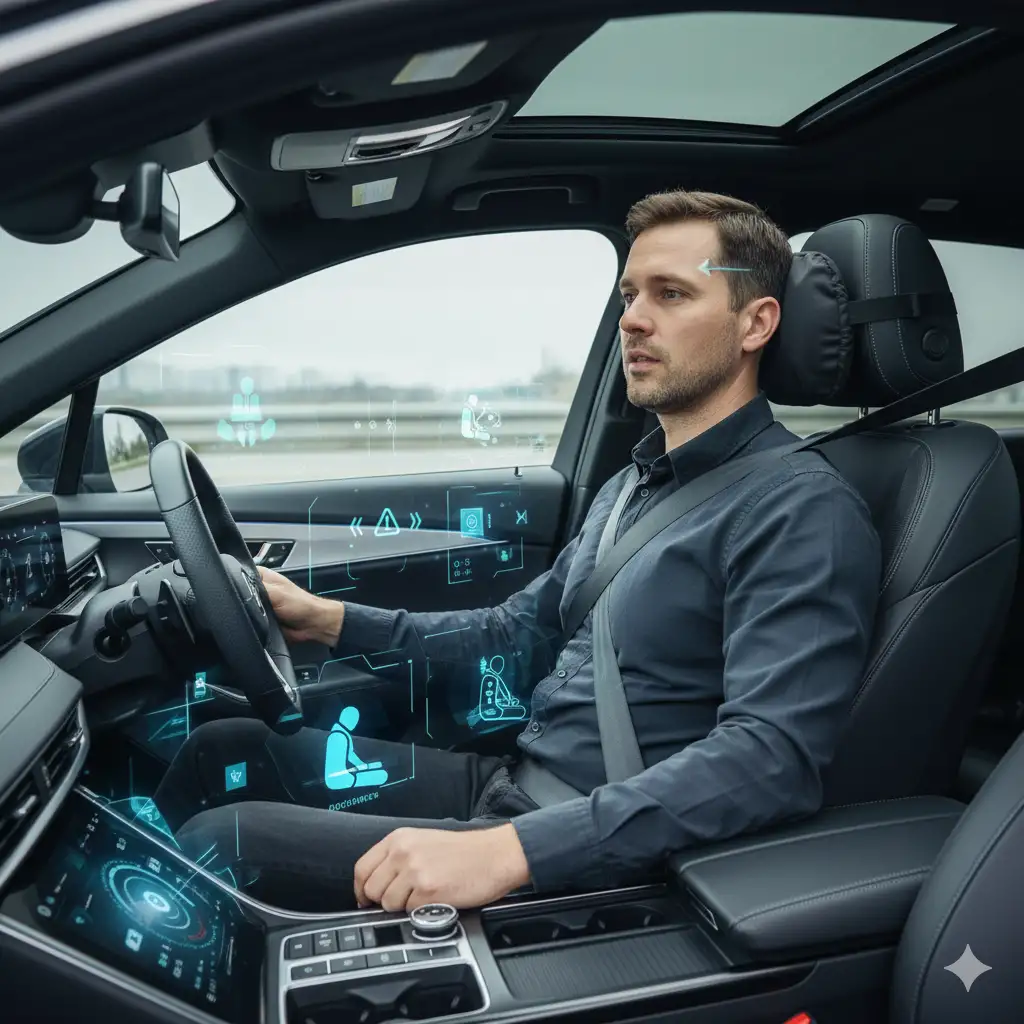
What Is an Active Restraint System? (Definition and Core Function)
Active restraint systems represent the foundation of vehicle safety, requiring deliberate engagement from occupants to provide crash protection. These systems operate on a simple but crucial principle: user participation is mandatory for the safety mechanism to function[1]. According to NHTSA data, when properly used, these systems reduce the risk of death by 45% for front-seat passengers and by 60% for pickup truck occupants[2].
The effectiveness of active restraints depends entirely on occupant compliance and proper usage. Current statistics show that 91.2% of Americans regularly use their seatbelts in 2024, though this still leaves millions unprotected[3]. Understanding how these systems work and why they require manual activation helps emphasize their critical role in vehicle safety.
Active vs Passive Safety Systems
The distinction between active and passive safety systems lies in their activation method and user involvement requirements:
| System Type | Activation Method | User Action Required | Examples |
|---|---|---|---|
| Active Restraints | Manual engagement | Yes – must buckle/adjust | Seatbelts, manual head restraints |
| Passive Restraints | Automatic deployment | No – activates on impact | Airbags, automatic seatbelts |
| Pre-crash Active | Sensor-triggered preparation | Initial manual engagement | Pretensioners, adaptive systems |
Active safety features prevent accidents from happening, while active restraints protect occupants during crashes—but only when manually engaged[1]. This fundamental difference makes user education and compliance essential for active restraint effectiveness. At Autvex, we emphasize that both systems work together to provide comprehensive protection.
The manual nature of active restraints allows users to adjust them for optimal fit and comfort. This adjustability ensures proper positioning across different body types and seating positions, something passive systems cannot achieve without user input.
The Role of Occupant Protection in Vehicle Safety Systems
Occupant protection through active restraints operates on multiple physical principles during collision events. These systems distribute crash forces across the strongest parts of the human body while preventing ejection and secondary impacts[4].
Key protection mechanisms include:
- Force distribution across chest and pelvis bones rather than soft tissue
- Controlled deceleration through webbing stretch and load limiting
- Optimal positioning for airbag deployment effectiveness
- Movement restriction to prevent contact with interior surfaces
Modern vehicles integrate active restraints with overall safety architecture, creating zones of protection around occupants. The importance of safety features when buying used cars includes verifying all active restraint systems function properly.
Research from IIHS demonstrates that proper seatbelt use combined with good head restraint geometry reduces whiplash injuries by 11-22% in rear-end collisions[5]. This data underscores how active restraints contribute to both primary crash protection and injury mitigation.
Primary Examples of Active Restraint Systems
Active restraint systems in modern vehicles have evolved significantly from basic lap belts to sophisticated multi-component safety devices. Understanding these examples helps drivers appreciate the technology protecting them every time they buckle up.
Seatbelt System Components
The three-point seatbelt remains the most critical active restraint in any vehicle, incorporating multiple engineered components working together for optimal protection[1]. Each component serves a specific safety function during normal driving and crash scenarios.
Primary seatbelt components and their functions:
- Webbing material: High-strength polyester designed to stretch controllably under 3,000+ pounds of force
- Buckle mechanism: Spring-loaded system requiring deliberate action to fasten and release
- D-ring guide: Adjustable shoulder belt positioning for different occupant heights
- Anchor points: Reinforced mounting locations tested to withstand extreme crash forces
Modern seatbelt webbing uses specialized weaving patterns that allow controlled energy absorption during impacts. This engineering reduces peak forces on the occupant’s body while maintaining restraint integrity throughout the crash sequence.
Seatbelt Retractor Mechanism
The retractor mechanism represents one of the most sophisticated components in active restraint systems, featuring automatic locking technology that engages during sudden deceleration[6]. During normal driving, the retractor allows free movement for comfort while maintaining light tension to keep the belt properly positioned.
Emergency locking retractors (ELRs) use either vehicle-sensitive or webbing-sensitive activation. Vehicle-sensitive systems respond to rapid deceleration or unusual vehicle angles, while webbing-sensitive types lock when the belt extends too quickly. Many modern vehicles like the 2025 BMW 2-Series incorporate both mechanisms for redundant protection.
Seatbelt Buckle and Load Limiter Functions
Modern buckles incorporate sophisticated sensors that communicate with the vehicle’s safety systems, enabling features like seatbelt reminders and airbag deployment optimization[1]. Load limiters work by allowing controlled belt payout once crash forces exceed predetermined thresholds, typically between 2,000-6,000 Newtons.
This technology proves especially important for smaller occupants who might experience excessive chest compression from standard belt tension. According to Autvex safety experts, load limiters can reduce chest injuries by 20-30% in frontal crashes while maintaining effective restraint.
Adjustable Seatbelt Positioning
Height-adjustable shoulder belt anchors allow occupants to position the belt properly across the chest and shoulder, avoiding neck contact or slipping off the shoulder[7]. Proper adjustment ensures the belt crosses the middle of the clavicle and sternum—the strongest bones in the upper body.
Studies show that improperly positioned seatbelts reduce effectiveness by up to 25% and can cause additional injuries during crashes. The latest luxury SUVs from Audi and BMW feature power-adjustable belt systems that remember preferred positions for different drivers.
Active Head Restraints
Active head restraints represent an advanced form of manual restraint system that requires proper initial adjustment but can also respond dynamically during rear-end collisions[5]. These systems reduce whiplash injuries by minimizing the distance between the occupant’s head and the restraint during impact events.
Active head restraint technologies include:
- Mechanical activation systems using seat pressure to push restraint forward
- Pyrotechnic deployment similar to airbag technology for instant response
- Adjustable positioning allowing manual height and distance optimization
- Integrated sensors detecting rear impact scenarios
IIHS testing demonstrates that vehicles with good head restraint geometry and active systems show 15-20% fewer whiplash injury claims compared to those with poor designs[5]. Proper manual adjustment remains critical—the restraint top should align with the head’s center of gravity.
Manual vs Automatic Seatbelts
While traditional manual seatbelts dominate the market, automatic seatbelt systems briefly appeared in the 1980s and 1990s as manufacturers attempted to meet passive restraint requirements[8]. These motorized systems would automatically position shoulder belts when doors closed, though most still required manual lap belt connection.
| Feature | Manual Seatbelts | Automatic Seatbelts |
|---|---|---|
| User control | Complete adjustment freedom | Limited positioning options |
| Reliability | Simple mechanical operation | Complex motors and tracks |
| Maintenance | Minimal requirements | Regular service needed |
| Current availability | Standard in all vehicles | Discontinued in most markets |
The failure of automatic seatbelts highlights why active restraints requiring conscious engagement remain superior. User participation ensures proper positioning and creates awareness of safety system engagement, contributing to overall safety consciousness while driving.
Active vs Passive Restraint Systems Comparison
Understanding the fundamental differences between active and passive restraint systems helps drivers appreciate why both technologies work together for comprehensive protection. Each system type offers unique advantages that complement the other during crash scenarios.
Seatbelts vs Airbags: Understanding the Difference
Seatbelts and airbags represent the primary examples of active versus passive restraint systems, each serving distinct protective functions during collisions[2]. While seatbelts require manual buckling, airbags deploy automatically within 20-30 milliseconds of impact detection without any occupant action.
Key operational differences:
- Activation timing: Seatbelts work immediately when buckled; airbags only during crashes
- Protection duration: Seatbelts provide continuous restraint; airbags deflate after initial impact
- Force management: Seatbelts distribute loads gradually; airbags cushion peak impacts
- Multiple impact protection: Seatbelts remain effective; airbags cannot redeploy
The synergy between these systems proves critical—NHTSA data shows that airbags alone reduce driver fatalities by 14%, but when combined with seatbelts, the reduction increases to 50%[2]. This dramatic improvement demonstrates why understanding all safety systems matters for crash survival.
How Airbags Work as Passive Restraints
Airbags exemplify passive restraint technology through their completely automated operation triggered by sophisticated sensor networks detecting crash severity and direction[9]. Modern vehicles contain multiple airbags—frontal, side, curtain, and knee—each designed for specific impact scenarios.
The deployment sequence involves crash sensors sending signals to the airbag control module, which processes data in under 3 milliseconds to determine deployment necessity. Pyrotechnic inflators then generate gas to inflate bags to full volume before occupant contact occurs. According to recent data, this passive system saves approximately 2,500 lives annually in the United States[2].
Unlike active restraints that users can improperly adjust or forget to use, passive airbags eliminate human error from the protection equation. However, they require proper seating position and seatbelt use for optimal effectiveness—highlighting the interconnected nature of vehicle safety systems.
Why Seatbelts Require User Action
The manual engagement requirement for seatbelts stems from both practical design considerations and the need for adjustable, continuous protection throughout the driving experience[1]. Active engagement creates user awareness and responsibility for their safety, fostering better overall safety behaviors.
Benefits of manual seatbelt engagement:
- Customizable fit for different body types and clothing
- Conscious safety commitment reinforcing defensive driving habits
- Pre-crash positioning ensuring optimal protection before impact
- Comfort adjustments encouraging consistent use
- Visual verification of proper engagement and positioning
Research indicates that the act of buckling up correlates with other safe driving behaviors, including lower speeds and reduced distracted driving[3]. This psychological component of active restraints contributes to overall crash prevention beyond just occupant protection during collisions.

Advanced Active Restraint Technologies
Modern vehicles incorporate sophisticated technologies that enhance traditional active restraint systems while maintaining the requirement for initial user engagement. These advances at Autvex recognize the evolution in automotive safety engineering.
Pretensioner Seatbelt Systems
Pretensioner technology bridges the gap between active and passive systems by automatically removing belt slack during crash events while still requiring initial manual buckling[6]. Within 15 milliseconds of impact detection, pretensioners can remove up to 5 inches of belt slack, positioning occupants optimally for protection.
Pretensioner activation methods include:
- Pyrotechnic charges creating instant belt retraction through gas pressure
- Mechanical springs releasing stored energy for rapid tightening
- Electric motors providing reversible pretensioning in pre-crash scenarios
- Buckle pretensioners pulling the buckle down to secure the lap belt
Modern pretensioners work in coordination with load limiters to provide optimal restraint force throughout the crash sequence. IIHS studies show that pretensioner-equipped vehicles reduce moderate-to-serious chest injuries by 25-35% compared to standard belt systems[5].
Adaptive Seatbelts and Personalization
Adaptive seatbelt systems represent the next generation of active restraints, using sensors and algorithms to customize protection based on occupant characteristics and crash severity[10]. These systems can adjust belt tension, load limiting thresholds, and pretensioner activation based on detected parameters.
| Adaptation Parameter | Detection Method | Adjustment Response |
|---|---|---|
| Occupant weight | Seat sensors | Modified force limits |
| Seating position | Seat track sensors | Pretensioner timing |
| Crash severity | Impact sensors | Progressive load limiting |
| Belt usage | Buckle sensors | Warning escalation |
The latest Audi Q5 models feature adaptive restraint systems that can differentiate between adult and child occupants, adjusting protection strategies accordingly. This personalization extends beyond simple weight detection to include factors like seat position, belt routing angle, and even detected pregnancy status in some advanced systems.
Vehicle Crash Sensors Integration
Modern active restraint systems rely on sophisticated sensor networks that continuously monitor vehicle dynamics and potential crash scenarios[10]. These sensors communicate with the restraint control module at speeds of up to 500 times per second, enabling split-second decisions about deployment strategies.
Primary sensor types and functions:
- Accelerometers measuring deceleration rates in multiple axes
- Pressure sensors detecting side impacts through door cavity compression
- Gyroscopic sensors identifying rollover scenarios
- Seat position sensors determining optimal belt tension
- Weight sensors classifying occupant size and position
The integration of these sensors with active restraints enables features like pre-safe positioning, where modern electric vehicles like the Audi A6 e-tron can automatically adjust seat positions and tighten belts when detecting imminent collision scenarios. This proactive approach bridges the gap between accident avoidance and occupant protection.
Pre-collision System Activation
Pre-collision systems represent the cutting edge of active restraint technology, preparing occupants for impact before it occurs while still requiring initial manual belt engagement[11]. These systems can activate within 200 milliseconds of detecting an unavoidable collision, optimizing occupant position and restraint tension.
When radar and camera systems detect an imminent collision, the pre-collision system initiates multiple protective actions simultaneously. Reversible belt tensioners remove slack, seats move to optimal positions, and windows close to ensure proper airbag deployment. The 2025 BMW 7 Series features advanced pre-collision systems that can even adjust suspension settings to better distribute crash forces.
Studies show that pre-collision preparation can reduce injury severity by 15-25% across various crash types[5]. These systems prove especially effective in offset frontal crashes where optimal occupant positioning significantly affects injury outcomes.
Modern Active Safety Technology
The evolution of active restraint systems continues accelerating as manufacturers integrate artificial intelligence, advanced materials, and connected vehicle technologies into safety designs.
Active Safety Features in Today’s Cars
Contemporary vehicles incorporate multiple active safety technologies that work in concert with traditional restraint systems to prevent accidents and minimize injury severity[12]. These features represent a comprehensive approach to occupant protection that begins before any collision occurs.
| Active Safety Feature | Function | Restraint Integration |
|---|---|---|
| Blind Spot Detection | Monitors adjacent lanes | Prepares side restraints |
| Lane Departure Warning | Alerts drift from lane | Activates belt tensioners |
| Automatic Emergency Braking | Applies brakes autonomously | Pre-tensions seatbelts |
| Cross Traffic Alert | Detects perpendicular traffic | Positions restraints optimally |
According to IIHS data, vehicles equipped with comprehensive active safety suites show 27% fewer injury claims compared to those without these features[5]. The latest luxury SUV comparisons consistently highlight active safety technology as a key differentiator.
AI in Car Safety and Future Restraint Systems
Artificial intelligence transforms active restraint systems from reactive to predictive technologies, analyzing patterns to anticipate and prepare for potential crashes before they occur[13]. Machine learning algorithms process thousands of data points per second, identifying risk factors human drivers might miss.
AI-enhanced restraint capabilities include:
- Occupant classification using computer vision to identify age, size, and seating position
- Predictive tensioning based on driving behavior and environmental conditions
- Adaptive force management customized to individual occupant characteristics
- Post-crash optimization learning from accident data to improve future responses
ZF LIFETEC’s latest systems demonstrated at InCabin 2025 showcase camera-based occupant monitoring that enables real-time restraint adaptation[13]. These systems can differentiate between adults, children, and even pets, adjusting protection strategies accordingly. Future implementations may include biometric monitoring to detect medical emergencies and adjust restraint parameters for vulnerable occupants.
Evolution from Manual to Smart Systems
The transformation of active restraints from simple manual belts to intelligent safety systems reflects decades of engineering advancement and regulatory evolution[1]. While the fundamental requirement for user engagement remains, technology increasingly augments human action with automated enhancements.
Early three-point belts introduced in 1959 required complete manual operation with no automated features. Today’s systems incorporate multiple technologies that activate automatically once the user performs the initial buckling action. The latest Audi sedans feature up to 12 different restraint-related sensors working together for optimal protection.
Timeline of active restraint evolution:
- 1959: Three-point seatbelt invention
- 1974: Interlock systems requiring belt use to start engine (later repealed)
- 1984: Mandatory seatbelt laws begin in New York
- 1995: Pretensioners become widespread
- 2008: Active head restraints introduced
- 2020: AI-based adaptive systems debut
- 2025: Predictive restraint positioning using V2X communication
This evolution continues as manufacturers at Autvex observe the integration of vehicle-to-everything (V2X) communication, enabling cars to share crash data instantly and prepare nearby vehicles’ restraint systems for potential secondary impacts.
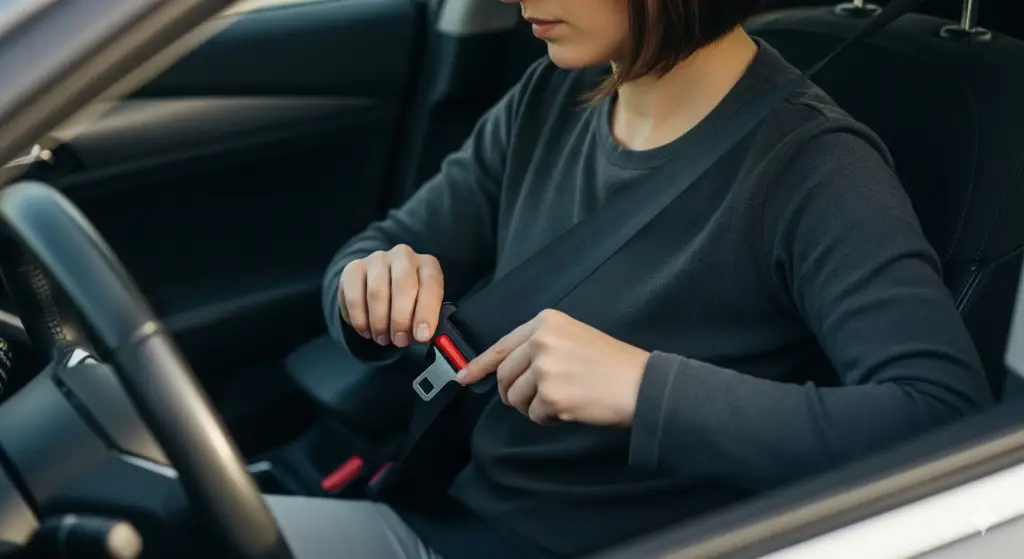
Key Takeaways
- Active restraints require manual engagement but provide continuous protection throughout your drive
- Seatbelts reduce fatality risk by 45% for front-seat passengers when properly worn
- Modern pretensioners remove slack within 15 milliseconds of detecting a crash
- Adaptive systems customize protection based on occupant size, position, and crash severity
- AI integration enables predictive restraint positioning before impacts occur
- Regular inspection ensures proper function of all active restraint components
- Combined active and passive systems provide optimal crash protection
Next Steps
After understanding active restraint systems, take these essential actions to maximize your vehicle’s safety potential:
Immediate actions:
- Check all seatbelts in your vehicle for proper operation and adjustment
- Verify head restraints align with your head’s center of gravity
- Test seatbelt retractors by pulling sharply to ensure locking mechanism engages
- Schedule inspection if any restraint system shows wear or malfunction
When buying a vehicle:
- Research safety ratings and active restraint features before purchasing
- Test adjustability of all restraint systems during test drives
- Verify pretensioner and load limiter availability
- Consider vehicles with advanced adaptive restraint technologies
Ongoing maintenance:
- Have restraint systems inspected during regular service intervals
- Replace any components showing fraying, cuts, or damage immediately
- Update vehicle software to ensure latest safety system calibrations
- Document any restraint system deployments for insurance and resale purposes
Frequently Asked Questions
What is the difference between active and passive restraint systems?
Active restraints require user action like buckling seatbelts, while passive restraints deploy automatically without occupant involvement during crashes. Active systems provide continuous protection when engaged, whereas passive systems only activate during collision events[1].
Is a seatbelt an active or passive restraint?
Traditional manually-buckled seatbelts are active restraints because users must consciously fasten them. Automatic seatbelts that engage when doors close are considered passive restraints since they require no deliberate user action[2].
Are airbags active or passive restraints?
Airbags are passive restraints that deploy automatically during crashes without requiring any action from vehicle occupants. They work best when combined with active restraints like seatbelts for comprehensive protection[9].
What is an active head restraint in a car?
Active head restraints automatically move forward during rear-end collisions to reduce whiplash by minimizing the gap between the occupant’s head and restraint. They require initial manual adjustment but respond dynamically during impacts[5].
How do passive restraints work in a car?
Passive restraints activate automatically through crash sensors and electronic control units, deploying airbags or tightening automatic seatbelts without occupant action. They provide supplemental protection to active restraints[8].
What are examples of active safety features in modern cars?
Examples include manual seatbelts, adjustable head restraints, child safety locks requiring manual engagement, and emergency brake handles. These features require deliberate user action to provide protection[12].
Do seatbelt pretensioners use an active or passive system?
Pretensioners are passive components that automatically tighten seatbelts during crashes. However, the seatbelt itself remains an active restraint requiring initial manual buckling by the occupant[6].
Is anti-lock braking system (ABS) an active or passive safety feature?
ABS is an active safety feature that prevents accidents by maintaining steering control during hard braking, rather than protecting occupants during a crash. It works to avoid collisions rather than mitigate injury during impacts[12].
References
- NHTSA. (2025). Understanding Vehicle Safety Systems. National Highway Traffic Safety Administration. https://www.nhtsa.gov
- NHTSA. (2024). Seat Belt Use in 2024 – Overall Results. Traffic Safety Facts. https://crashstats.nhtsa.dot.gov
- NSC. (2025). Seat Belts – Occupant Protection Statistics. National Safety Council. https://www.nsc.org
- Sheen Group. (2025). Active vs Passive Car Safety Features. https://www.sheengroup.com.au
- IIHS. (2025). Vehicle Seat/Head Restraint Evaluation Protocol. Insurance Institute for Highway Safety. https://www.iihs.org
- HDFC Ergo. (2025). Seat Belt Pretensioners: Important Vehicle Safety Feature. https://www.hdfcergo.com
- Kia Motors. (2025). Retractor Pretensioner Technology. https://www.kia.com
- Market Report Analytics. (2025). Automotive Active Seat Belt 2025-2033 Analysis. https://www.marketreportanalytics.com
- IIHS. (2024). Market Forces and Regulation in the Development of Airbags. https://www.iihs.org
- Smart Eye. (2025). Euro NCAP 2026: New Standards for Occupant Monitoring. https://www.smarteye.se
- Mercedes-Benz. (2025). Information on How the Restraint System Works. https://www.mercedes-benz.com
- HERE Technologies. (2025). New Levels of ADAS Are on the Rise. https://www.here.com
- ZF LIFETEC. (2025). Adaptive Restraint Systems at InCabin 2025. https://press.zf.com

I am a senior automotive analyst at Autvex. Expert vehicle evaluations, in-depth reviews, and objective analysis helping readers make informed automotive decisions with years of industry experience.


